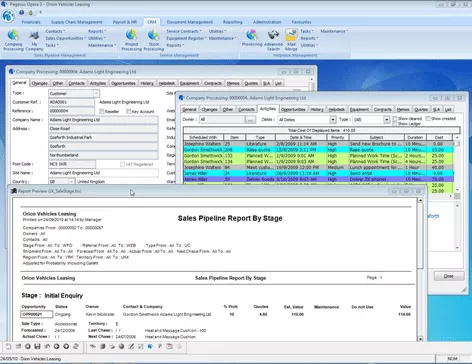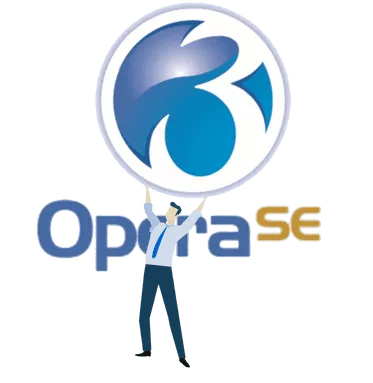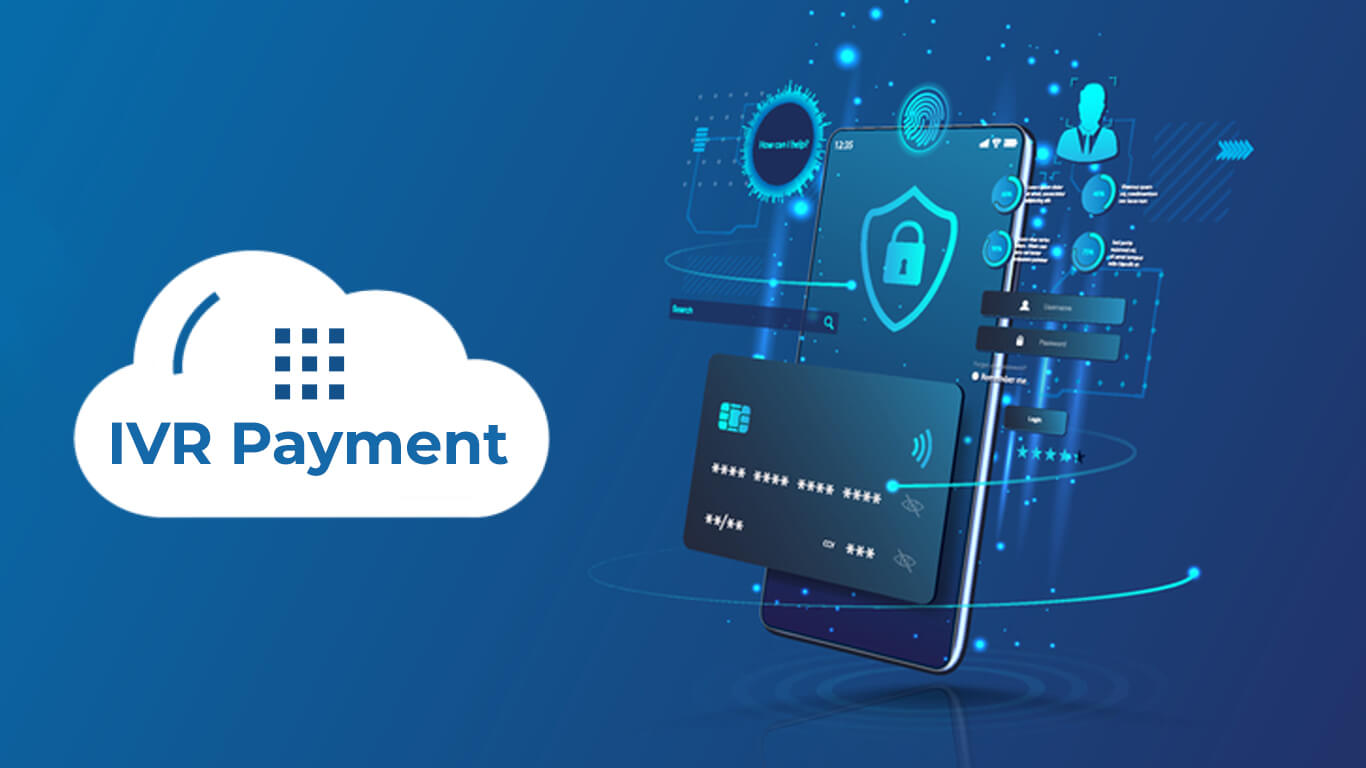Pegasus CIS has been specifically written for small to medium-sized (SME) contractors in the construction and allied industries. It eases the administrative burden of running construction projects, whilst providing all the management tools necessary to ensure that all critical information is readily available to the management team. Get started with your Opera II CIS Integration today.
Get in Touch
Learn more detail about CRM Integration with your phone system from our expert team.
Application Information:
- Manufacturer:
- Pegasus
- CRM:
- Opera II CIS
- Market/Sector:
- Construction
- Version:
- 3
Other Informations:
- Operation System:
- Windows
- Installation Option:
- Mandatory remote installation required.
- Product:
- Go Integrator sipdesk

Supported Features (related to latest supported release)
- Address book search:
- Caller details preview:
- Manual screen pop:
- Click to dial via Sipdesk Integrator:
- Additional features:
- Click to dial via Go Integrator:
- Auto Screen Pop:
- Manual call activity logging:
- Automatic call activity logging:
- Integration with Notes:
Get in Touch
Learn more detail about CRM Integration with your phone system from our expert team.
Description
Introduction to Pegasus Opera II CIS CRM Telephony Integration
Pegasus Opera II CIS CRM Telephony Integration offers a comprehensive solution that seamlessly integrates telephony capabilities with the Pegasus Opera II CIS CRM system. This integration allows businesses to streamline their communication processes by combining their customer relationship management (CRM) functionalities with telephony features. By leveraging this integration, organizations can enhance their overall efficiency and effectiveness in managing customer interactions, optimizing sales and marketing activities, and improving customer satisfaction.
Key Features and Benefits of the Integration
The Pegasus Opera II CIS CRM Telephony integration provides a range of key features and benefits that empower businesses to transform their customer interactions. With this integration, users can effortlessly manage inbound and outbound calls directly from the CRM system, eliminating the need for manual call logging and reducing the chances of errors or missed opportunities. The integration also enables automatic call documentation, ensuring that every interaction is recorded for future reference and analysis. This feature not only saves time but also enhances data accuracy and compliance with regulatory requirements.
Streamlining Communication with Integrated Telephony
The integration of telephony with Pegasus Opera II CIS CRM brings a new level of efficiency to communication processes. Users can make and receive calls directly within the CRM system, eliminating the need for separate telephony tools or devices. This seamless integration allows for quick and easy access to customer information during calls, enabling personalized and informed conversations.
Moreover, incoming calls are automatically identified and linked to the relevant customer records, providing a comprehensive view of each customer’s history and interactions. By streamlining communication, businesses can enhance productivity, minimize errors, and deliver exceptional customer service.
Enhancing Customer Relationship Management (CRM) Capabilities
The integration of telephony with Pegasus Opera II CIS CRM expands the capabilities of the CRM system, enabling businesses to manage customer relationships more effectively. With integrated telephony, users can track and log all customer interactions, including calls, within the CRM system. This centralized record of communication provides a holistic view of customer interactions, enabling teams to understand customer preferences, address inquiries or issues promptly, and build stronger relationships.
Furthermore, the integration facilitates better call routing and call queuing, ensuring that customer calls are efficiently directed to the appropriate departments or representatives. This enhanced CRM functionality helps businesses optimize their customer service processes, boost customer satisfaction, and drive long-term loyalty.
Seamless Integration with Pegasus Opera II CIS CRM
The integration between telephony and Pegasus Opera II CIS CRM is designed to provide a seamless user experience. The telephony features are tightly integrated into the CRM system’s interface, allowing users to access all telephony functionalities from within the familiar CRM environment. This integration ensures a smooth transition for users, minimizing the learning curve and maximizing productivity. Users can initiate and receive calls, access call logs, and update customer information without switching between multiple applications or interfaces. The seamless integration promotes efficiency, reduces manual effort, and enables teams to focus on delivering exceptional customer experiences.
Managing Inbound and Outbound Calls Efficiently
The Pegasus Opera II CIS CRM Telephony integration empowers businesses to manage inbound and outbound calls efficiently. With integrated telephony, incoming calls are automatically routed to the appropriate departments or representatives based on predefined rules and criteria. This ensures that customer calls are directed to the most qualified individuals, reducing call transfers and wait times. Outbound calls can also be initiated directly from the CRM system, enabling sales and support teams to reach out to customers with ease. By streamlining call management, businesses can optimize their call-handling processes, improve response times, and enhance overall customer satisfaction.
Automating Call Logging and Documentation
One of the key advantages of the Pegasus Opera II CIS CRM Telephony integration is the automation of call logging and documentation. Every call made or received through the integrated telephony system is automatically logged and documented within the CRM system. Call details such as date, time, duration, and caller information are captured and associated with the respective customer records. This eliminates the need for manual note-taking or data entry, saving time and reducing the chances of errors. The automated call documentation provides a comprehensive and accurate history of customer interactions, enabling users to access past conversations, understand customer preferences, and provide personalized service.
Improving Customer Service and Satisfaction
The integration of telephony with Pegasus Opera II CIS CRM brings significant improvements to customer service and satisfaction levels. By having access to customer information during calls, representatives can provide a more personalized and tailored experience. They can quickly retrieve customer details, review previous interactions, and gain insights into customer preferences and needs. This empowers representatives to address inquiries and resolve issues more efficiently, leading to faster resolution times and increased customer satisfaction. The integration also enables call recording, allowing for quality assurance and training purposes to ensure consistent and high-quality customer service.
Tracking and Analyzing Call Data for Performance Evaluation
With the Pegasus Opera II CIS CRM Telephony integration, businesses gain valuable insights by tracking and analyzing call data. The integration captures call metrics such as call volume, call duration, and call outcomes, providing valuable data for performance evaluation. Managers and supervisors can analyze call data to identify trends, evaluate team performance, and make data-driven decisions. These insights can be used to optimize call-handling processes, identify training needs, and enhance overall team productivity. By leveraging call data analytics, businesses can continuously improve their customer service strategies and drive better results.
Integrating Telephony with Sales and Marketing Activities
The integration of telephony with Pegasus Opera II CIS CRM enables seamless collaboration between sales, marketing, and customer service teams. By linking call activities with customer records, teams can gain a comprehensive view of each customer’s interactions across various touchpoints. Sales representatives can identify upsell or cross-sell opportunities based on previous conversations, while marketers can refine their targeting and messaging strategies using insights from call data. This integration facilitates a coordinated approach, ensuring consistent and personalized customer experiences throughout the sales and marketing funnel.
Enhancing Collaboration and Internal Communication
The Pegasus Opera II CIS CRM Telephony integration fosters enhanced collaboration and internal communication within the organization. Integrated telephony enables teams to share call notes, add comments, and collaborate on customer interactions within the CRM system. This promotes knowledge sharing, enables seamless handoffs between team members, and ensures that everyone has access to up-to-date information.
Additionally, internal communication is streamlined with features such as call transfer and conference calls, allowing teams to collaborate effectively on customer inquiries or complex cases. By promoting collaboration and communication, businesses can optimize their internal processes and provide a unified approach to customer service.
Customization and Configuration Options
The Pegasus Opera II CIS CRM Telephony integration offers customization and configuration options to tailor the solution to the specific needs of businesses. Administrators can configure call routing rules, define call queues, and set up personalized call scripts within the CRM system. This flexibility allows businesses to adapt telephony integration to their unique workflows and requirements. Customization options may include calling disposition codes, call tagging, or integration with third-party telephony providers. By customizing the integration, businesses can optimize their telephony processes to align with their organizational structure and customer service objectives.
System Requirements and Compatibility
Before implementing the Pegasus Opera II CIS CRM Telephony integration, it is important to review the system requirements and ensure compatibility with existing infrastructure. The integration may require specific telephony hardware, such as IP phones or a computer telephony integration (CTI) server. It is essential to verify compatibility with the CRM system version and any other relevant software or applications.
Additionally, network considerations, such as bandwidth requirements and network stability, should be evaluated to ensure optimal performance. By conducting a thorough assessment of system requirements and compatibility, businesses can ensure a smooth implementation and minimize potential technical issues.
Implementation and Deployment Considerations
Implementing the Pegasus Opera II CIS CRM Telephony integration requires careful planning and execution. It is important to define clear objectives, establish a project timeline, and allocate necessary resources for a successful deployment. Key considerations include data migration, user training, and change management.
Data from existing telephony systems may need to be imported or integrated into the CRM system, ensuring a seamless transition. Comprehensive user training should be provided to enable users to maximize the benefits of the integration. Change management strategies, such as communication and stakeholder engagement plans, should be implemented to ensure the smooth adoption of the integrated telephony solution.
Customer Success Stories and Testimonials
Customer success stories and testimonials provide valuable insights into the real-world benefits of the Pegasus Opera II CIS CRM Telephony integration. Highlighting success stories and testimonials in the category description can showcase how businesses have leveraged the integration to achieve their goals. These stories can illustrate improvements in customer service, sales performance, and overall operational efficiency. Including quotes or anecdotes from satisfied customers can add credibility to the category description and help potential users envision the positive impact of the integration on their organizations.
Support and Training Resources
The availability of support and training resources is crucial for ensuring a smooth experience with the Pegasus Opera II CIS CRM Telephony integration. Businesses should assess the support options provided by the integration vendor, such as technical support channels and response times. Training resources, such as user guides, video tutorials, or online documentation, should be easily accessible to enable users to quickly familiarize themselves with the integrated telephony solution. Additionally, ongoing training and updates should be considered to keep users informed about new features or enhancements. Robust support and training resources contribute to a positive user experience and facilitate effective utilization of the telephony integration.
Future Developments and Roadmap for Pegasus Opera II CIS CRM Telephony Integration
To provide a forward-looking perspective, it is important to discuss future developments and the roadmap for the Pegasus Opera II CIS CRM Telephony integration. This can include mentioning any planned updates, upcoming features, or enhancements that the integration vendor has outlined. Sharing insights into the vendor’s vision and commitment to continuous improvement can instill confidence in potential users and demonstrate that the integration is a future-proof solution. Including information about the vendor’s track record of delivering updates and responding to customer feedback can further reinforce the integration’s reliability and long-term viability.
FAQs
What is Pegasus Opera II CIS CRM Telephony integration?
Pegasus Opera II CIS CRM Telephony integration refers to the seamless combination of telephony capabilities with the Pegasus Opera II CIS CRM system. It allows businesses to integrate their customer relationship management functionalities with telephony features, enabling streamlined communication, enhanced customer service, and improved efficiency.
What are the benefits of integrating telephony with Pegasus Opera II CIS CRM?
Integrating telephony with Pegasus Opera II CIS CRM offers numerous benefits. It enables businesses to manage inbound and outbound calls efficiently, automate call logging and documentation, improve customer service and satisfaction, track and analyze call data for performance evaluation, and integrate telephony with sales and marketing activities. It also enhances collaboration and internal communication, providing a unified approach to customer interactions.
How does Pegasus Opera II CIS CRM Telephony integration enhance customer service?
The integration enhances customer service by providing representatives with quick access to customer information during calls, enabling personalized and informed conversations. It automates call logging and documentation, ensuring accurate records of customer interactions. Additionally, the integration facilitates call routing and queuing, minimizing wait times and improving response rates. These features collectively contribute to faster issue resolution, increased customer satisfaction, and improved overall customer service.
Can I customize the Pegasus Opera II CIS CRM Telephony integration to suit my business needs?
Yes, the integration offers customization and configuration options to tailor the solution to your specific requirements. Administrators can configure call routing rules, define call queues, and set up personalized call scripts within the CRM system. This flexibility allows businesses to adapt the integration to their unique workflows, organizational structure, and customer service objectives.
What are the system requirements for Pegasus Opera II CIS CRM Telephony integration?
Before implementing the integration, it is important to review the system requirements and ensure compatibility with existing infrastructure. This may include specific telephony hardware, such as IP phones or a computer telephony integration (CTI) server. Compatibility with the CRM system version and other relevant software or applications should also be verified. Network considerations, such as bandwidth requirements and network stability, should be evaluated to ensure optimal performance.
Is training available for users who will be using the integrated telephony solution?
Yes, training resources are typically provided to enable users to maximize the benefits of the integrated telephony solution. These resources may include user guides, video tutorials, or online documentation. Comprehensive user training ensures that users are familiar with the telephony features and can effectively utilize them within the CRM system. Ongoing training and updates may also be available to keep users informed about new features or enhancements.
What support options are available for Pegasus Opera II CIS CRM Telephony integration?
Support options vary depending on the integration vendor. It is important to assess the support channels and response times provided by the vendor. Common support options include technical support via phone, email, or a dedicated support portal. It is recommended to choose a vendor that offers reliable and responsive support to address any issues or questions that may arise during the implementation and usage of the integrated telephony solution.
Is there a roadmap for future developments of Pegasus Opera II CIS CRM Telephony integration?
The availability of a roadmap for future developments depends on the integration vendor. Some vendors may outline planned updates, upcoming features, or enhancements for the integration. It is advisable to choose a vendor with a track record of delivering updates and responding to customer feedback, as this indicates their commitment to continuous improvement and ensures the long-term viability of the integration.




